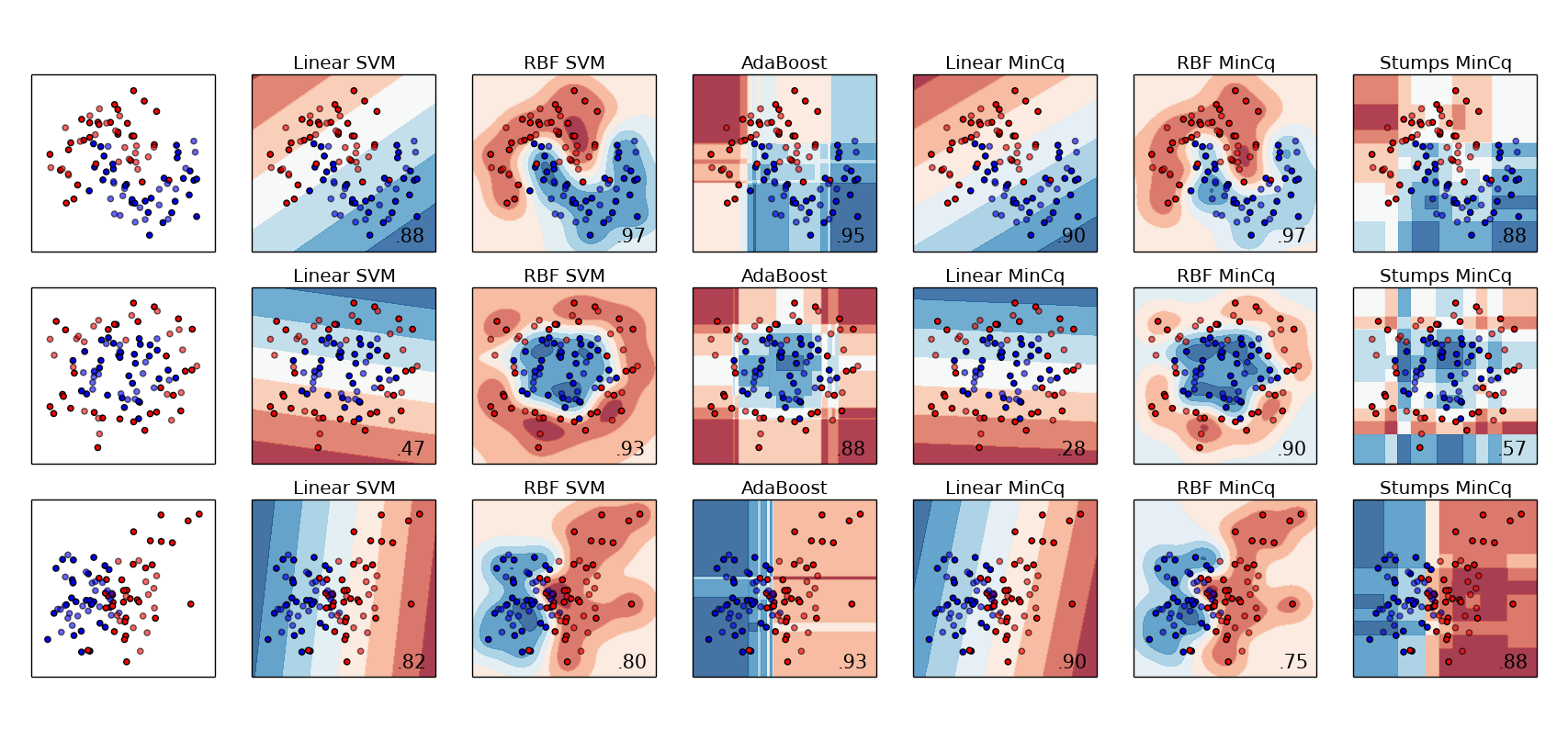This is a simple implementation of MinCq, a learning algorithm inspired by the PAC-Bayesian theory.
MinCq was first introduced in [1], but an upcoming journal paper will present an extensive and complete analysis of majority votes, PAC-Bayesian theory for inductive binary classification, and the resulting algorithm (MinCq) with much more experiments and information [2].
This implementation is compatible with Scikit-Learn, and comes with usage examples, one of which is based on this Scikit-Learn example
This Python code depends on Scikit-Learn. One example depends on Matplotlib.
$ python3 example.py
StumpsMinCq
-----------
Training set risk: 0.0357
Testing set risk: 0.0000
LinearMinCq
-----------
Training set risk: 0.2768
Testing set risk: 0.2368
PolyMinCq
-----------
Training set risk: 0.0625
Testing set risk: 0.0263
RbfMinCq
--------
Training set risk: 0.0089
Testing set risk: 0.0000
┌--------------------------------------------┐
| RbfMinCq on Iris |
├--------------------------------------------┤
|mu -> | 0.0001| 0.0010| 0.0100|
|gamma | | | |
| 0.0 | 0.0357| 0.0357| 0.0357|
| 0.1 | 0.0536| 0.0357| 0.0536|
| 1.0 | 0.0536| 0.0536| 0.0536|
| 10.0 | 0.0536| 0.0536| 0.0536|
└--------------------------------------------┘
Best parameters: {'gamma': 0.0, 'mu': 0.0001}
Training set risk: 0.0179
Testing set risk: 0.0000[1] François Laviolette, Mario Marchand and Jean-Francis Roy. "From PAC-Bayes Bounds to Quadratic Programs for Majority Votes". In Proceedings of the 28th International Conference on Machine Learning, 2011.
[2] Pascal Germain, Alexandre Lacasse, François Laviolette, Mario Marchand and Jean-Francis Roy. "Risk Bounds for the Majority Vote: From a PAC-Bayesian Analysis to a Learning Algorithm". Accepted for publication in the Journal of Machine Learning Research, 2014.
